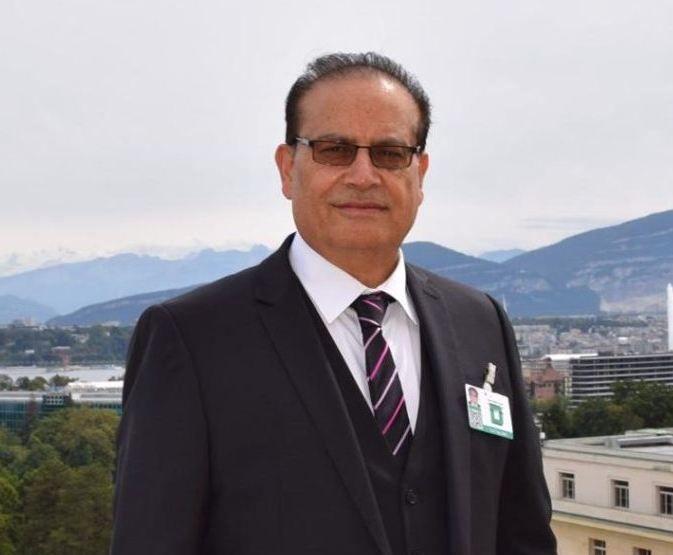By: Qamar Bashir
NASA scientists were shocked when Voyager-1, an interstellar spacecraft currently around 15 billion miles (22 km) away from Earth, stopped transmitting data in November 2023 for the first time since it began its interstellar voyage 46 years ago. This unexpected halt in communication cast a gloom of sadness and despair over NASA. A team of NASA scientists and engineers was hastily assembled to identify the fault and attempt to address it remotely, despite the immense distance of 15 billion miles, but with little or no hope of success.
Voyager 1, originally designed for a mission of five to six years, was launched by NASA on September 5, 1977, from Cape Canaveral, Florida, aboard a Titan IIIE/Centaur rocket. Its primary mission was to study the outer planets of the solar system, including Jupiter and Saturn, along with their moons.
Later, Voyager 1’s objective shifted to studying the interstellar medium and providing data on the heliosphere’s boundary, where the influence of the Sun ends and the interstellar medium begins. It achieved the remarkable feat of becoming the first human-made object to reach such a distant location.
During its maiden and exciting journey, Voyager 1 provided valuable data on the magnetic fields, energetic particles, and cosmic rays in the outer solar system. Its observations have contributed significantly to our understanding of space and time, mass, and energy. Voyager 1 has helped us comprehend the dynamics of the outer solar system and the interactions between the solar wind and interstellar medium.
This boxy machine, with its pearly white, conical disk, resembles a giant loudspeaker in space. Voyager 1 has been sending back stunning data, making it not only the first craft to enter interstellar space but also the farthest human-made object ever.
Voyager 1 has been responsible for identifying new Jovian moons, discovering another Saturnian ring, and capturing the solar system’s first and only “family portrait,” which includes our eclectic gang of planets.
Furthermore, Voyager 1’s observations have provided insights into the nature of magnetic fields, plasma, and cosmic rays in interstellar space. It has also transmitted stunning images of planets, moons, and other celestial bodies in outer space, enriching our understanding of the universe.
The development of the Voyager spacecraft and its instruments led to advancements in technology that have been applied to various fields, including communication, imaging, and spacecraft design. These advancements have contributed to the development of new technologies that have improved daily life for many people. This knowledge has contributed to humanity’s collective knowledge and has inspired generations of scientists and researchers.
The Voyager missions have captured the imagination of people around the world and have inspired interest in space exploration and science. This inspiration has led to increased support for scientific research and education, which has benefit society as a whole.
Voyager 1 carries the Golden Record, a time capsule containing sounds and images from Earth, intended to communicate the diversity of life and culture on our planet to any intelligent extraterrestrial life that may encounter the spacecraft. It also contains greetings from Earth, intended to provide a snapshot of life and culture on our planet.
If decoded, it could give the alien civilization insights into Earth’s biodiversity, languages, music, and more, helping them understand humanity and our planet in ways previously impossible. It could open up the possibility of communication between our two civilizations leading to exchanges of knowledge, ideas, and potentially even diplomatic relations. It contains cultural artifacts intended to represent the diversity of human culture. If understood by the alien civilization, it could lead to a cultural exchange between our two civilizations, fostering mutual understanding and appreciation.
The technology used to create the Golden Record, as well as the spacecraft itself, could be of interest to the alien civilization. Studying these technologies could lead to advancements in their own technology, or at the very least, a better understanding of our technological capabilities.
The NASA scientists were acutely aware of the importance of the messages and images sent back by Voyager 1. They were hoping against hope to restore its functionality. Frantically, they utilized all available tools and gadgets to understand the nature and extent of the damage the craft might have sustained, although they knew that the spacecraft’s power supply was gradually decreasing. They realized that it would eventually be unable to communicate with Earth. Finally, the day arrived when one of humanity’s most accomplished spacecraft stopped communicating with the world.
Undaunted by the slim possibility, the team diligently employed all tools and knowledge at their disposal. They discovered that the spacecraft was still operational but had only lost communication. The breaking news was joyously announced by Mr. Bruce Waggoner, the Voyager mission assurance manager.
This discovery provided them with the added motivation and incentive to continue their efforts to restore communication with the spacecraft. They eventually identified the fault: a tiny, worn-out chip. Over time, exposure to solar and interstellar radiation, as well as bombardment by subatomic particles, had caused the chip to malfunction, disrupting the entire communication system of Voyager 1.
Equipped with far more advanced technology than was available during the spacecraft’s launch in 1977, the scientists managed to retrieve the data from the faulty chip. They then transferred this data to another chip, bypassing the faulty one and restoring communication. Additionally, they reset the craft’s computer and other vital components.
Their perseverance paid off, and against all odds, Voyager 1, one of humanity’s greatest achievements, began communicating once again with Earth on April 20, 2024.
With its communication restored, Voyager 1 is expected to continue its journey through interstellar space for tens of thousands of years. This stunning restoration ensures that Voyager 1 can continue its historic mission, serving as a testament to human curiosity and exploration for generations to come.
By: Qamar Bashir
Former Press Secretary to the President
Former Press Minister to the Embassy of Pakistan to France
Former MD, SRBC











